Her anger broke dishes: Former legal secretary cherishes newfound calm and new life path through practice of Buddhism
Something she said on a date jolted Cindy Fong. And it tossed her onto a path that would change her life.
“A few years after my divorce, I was dating a man and I said something profoundly hurtful to him. I shocked myself. I couldn’t stop thinking about what made me say something like that. And I wanted to find out,” she said.
Almost immediately after, Fong received a brochure from a Buddhist center in Berkeley that was offering a six-month course on Buddhist Psychology. “I jumped at it,” she said.
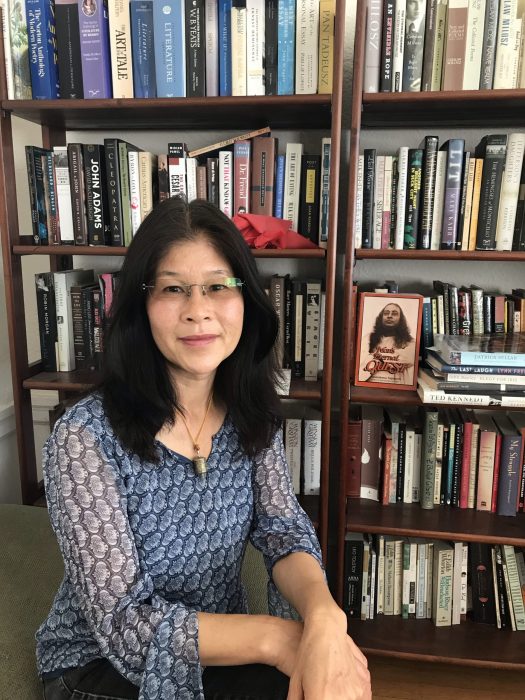
And thus, the journey into a new life began. It took her to India for more instruction, away from work as a legal secretary in a big law firm and on to three months living in a Nepal monastery, teaching English to young monks, many of whose parents had fled Tibet under Chinese communist rule.
Awed by the serenity and beauty of the mountain monastery, she is sure she will return. “The air was so clean. I loved the quiet and spaciousness. Mountains always give me the feeling that there is more to life. I felt like I was in Shangri-la.”
When Fong first began exploring her spirituality, she was a long way from Shangri-la. Her second marriage had just ended, sending her into an existential crisis that had already had her exploring spirituality. “I had the sense of being a lost soul,” she said. She began reading books on Yogananda, Rumi, Jungian psychology and Buddhism.
An ongoing process of learning, analyzing
The six-month course on Buddhism turned into her chosen spiritual path. She likes Buddhism because it doesn’t just tell you how to be a better person, it gives you instructions on how to do it. “If you’re Buddhist, you have a dharma practice, an ongoing process of learning, meditating and analyzing the thoughts and emotions that unmindfully govern the way you do things and react to events.”
Dharma is the teaching of the Buddha. Its most fundamental aspect is the practice of morality, similar to the Ten Commandments. It involves looking into the workings of the mind that cause suffering. The ultimate goal is to end this suffering.
Fong’s biggest challenge was anger. “My anger broke dishes and caused my second husband to walk on egg shells,” she said.
She began meditating an hour each day. Her practice helped her to eliminate many of the triggers that caused her anger to rise. Her triggers involved not getting what she wanted. “I could act like a spoiled child,” she said. An unforgettable incident for Fong was when her husband didn’t cook her steak well-done, the way she liked it. “There was a little pink in it and I threw the plate across the kitchen. My ego felt that he didn’t care about what I wanted.”
Letting go of judgment
Fong still experiences anger, but she is able to reflect on Buddhist teachings that keep them from rising to destructive behavior.
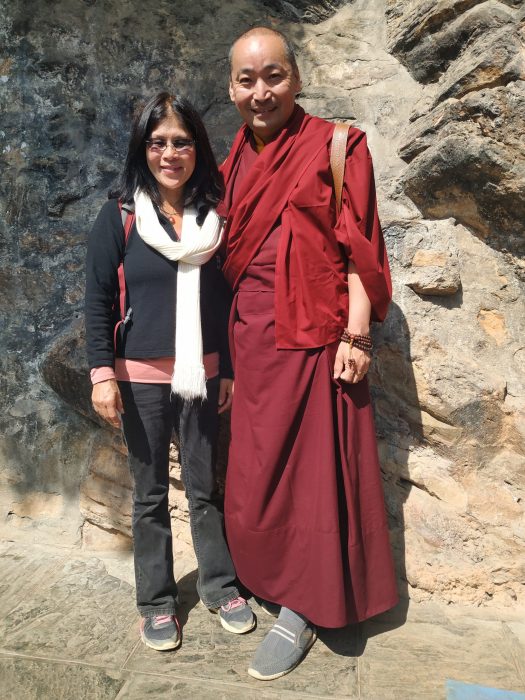
Practicing Buddhism improved all her relationships, she said, especially with her two sons. “Before Buddhism entered my life, I had expectations and fear with regard to my oldest son. I expected him to study hard, do well and excel. I warned him in a threatening manner to not hang around with the wrong crowd, do drugs and possibly get into serious troubles. I learned much later that he had gotten into some trouble but because he feared the way I would react, he never came to me for help or advice.”
Her youngest son had the better mother, she said. “I was already learning about myself. Now, I respect my sons as individuals. They know I support them without judgment or expectations.”
Fong’s commitment to her practice took her on several trips to India for dharma teaching.
An encounter with the Dalai Lama
Once, after attending an empowerment session given by the Dalai Lama, she saw him at the airport in Dharamshala and offered him a khata (a traditional scarf in Tibetan Buddhism).
Exploring this new way of thinking and being changed her attitude about her work. In 2018, at 59, “I was totally burned out as a legal secretary. I had lost interest in this adversarial work,” she said. “I didn’t go home feeling I had done anything worthwhile.”
Fong quit her job and began volunteering at the Chen Ling Center for Tibetan Buddhist Studies in San Francisco. When she learned six months later that the Jonang Monastery was looking for an English teacher, she dropped everything and went to Nepal to teach in Pharping, a small town in the Kathmandu valley.
Born in Hong Kong (her family moved to San Francisco when she was a child), Fong has a deep connection to Asian cultures and had fallen in love with Nepal on a layover. She had always thought she would like teaching, and knew immediately the Pharping job was what she wanted to do. The monastery was looking for people under 40. Fong was 60, but she convinced them she could do the job. “I told them that I was healthy and not on any medications and had travelled in a rural part of Tibet and was familiar with the tradition of the monastery.”
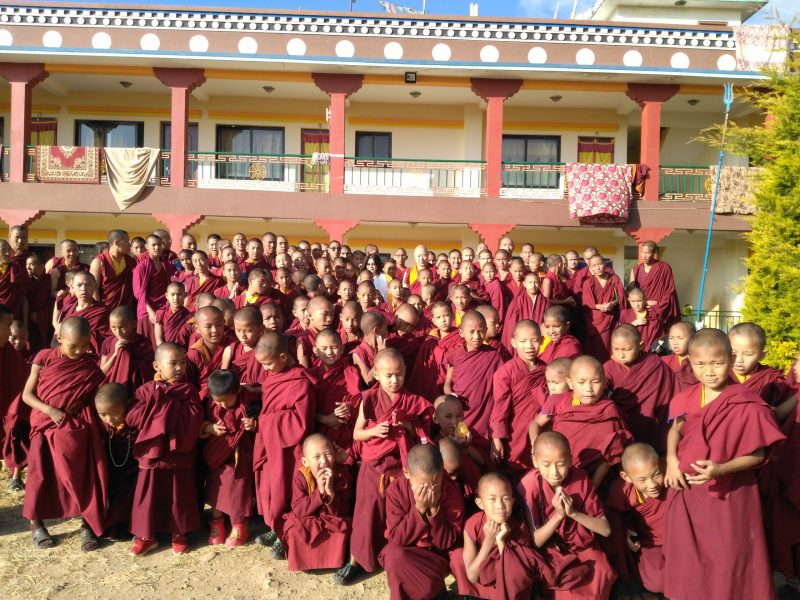
She loved the spiritual resonance of Pharping. An important pilgrimage site for Tibetan Buddhists, it has many monasteries, Hindu temples and shrines. One of its most sacred places is the Asura Cave, where a revered 8th century Buddhist master meditated. Fong was able to visit the cave often.
‘Such happy kids’
Fong taught three 55-minute classes Monday through Friday. Class sizes ranged from 13 to 24; students were from 11 to 18 years old. Most come from homes in two of the most remote districts of Nepal. It is an honor to become a monk and some boys begin training when they are as young as five. They live at the monastery and visit their families every few years. Their parents are farmers, goat or sheep herders and carpenters.
“I loved the liveliness of the young monks. The energy was high. They were such happy kids.”
Her biggest challenge as a teacher was getting the students to raise their hands.
“They’re not used to it. When they learn to chant, they repeat everything the teacher says at the same time. In the beginning if I asked a question, they would all start shouting the answers at once.”
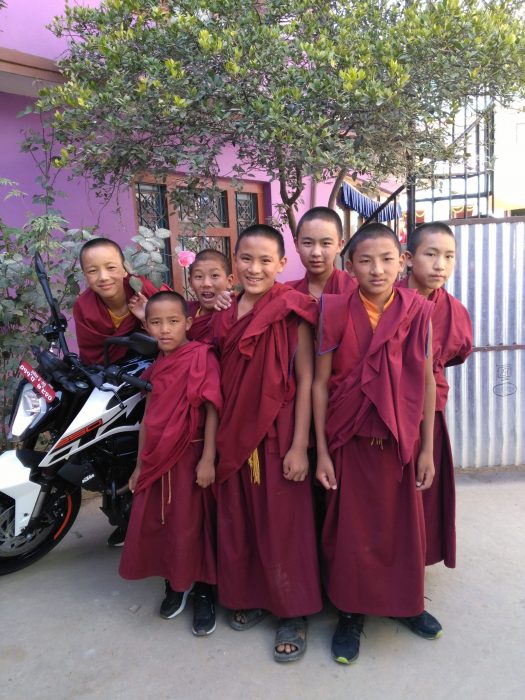
She persevered and with some support from the monk in charge of discipline she learned to manage the class.
Though she was far from home, she never felt lonely. “There is a sense of warmth in Nepal. Nepali are generally very warm and kind. People do not rush here and there.”
Fong’s home in Pharping was a spacious room with a single bed, a bookcase and coffee table. It was a short walk from the monastery and her classroom was on the floor below. She used an electric kettle to boil water for drinking, bathing and hand-washing her clothes.
Simple living and eating
She enjoyed the simplicity of her new home, but did miss some modern conveniences. “My room had a flush toilet, but the shower was the Nepalese style and when I used it, I wet the entire bathroom, so I purchased a small tub for bathing. I really missed my bathtub.”
Her meals were delivered to her room. For breakfast she had a hard-boiled egg with oatmeal or potato turmeric soup. Lunch was always lentil soup with rice, scrambled or hard-boiled eggs and occasionally yogurt. For dinner, she ate Tibetan style noodle soup or fried rice. “Twice they made famous Tibetan dumplings called momos. Once my students made a pizza for me and it was absolutely delicious.”
Getting around was challenging. There are no sidewalks in Pharping, so pedestrians share the road with cars and motorcycles. The roads are narrow and unpaved and full of dust kicked up from cars and motorcycles. “My clothes were always dusty and I got tired of hand-washing them. When it rains, the dirt roads become mud and I had to I leap over rain-filled ditches and walk on muddy roads.”
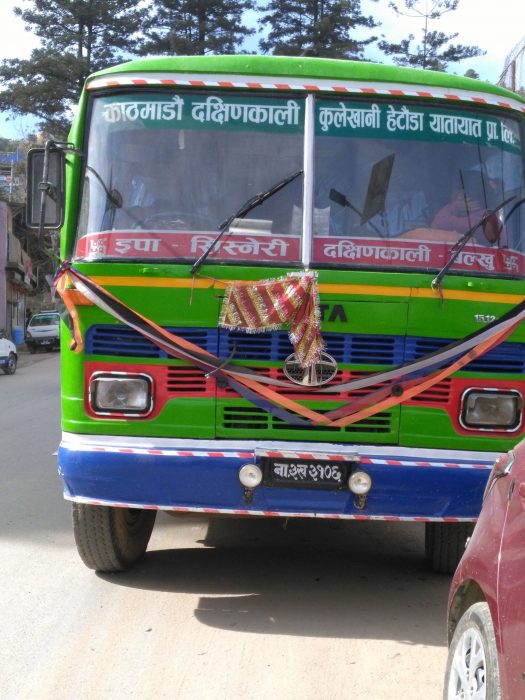
On weekends, she visited the shops and restaurants in Kathmandu’s Themal district. To get there, she had to ride for an hour on a crowded bus over narrow, bumpy mountain roads. It was hard to find places in Kathmandu because Nepal doesn’t have street numbers. An address is usually just the name of the building complex and sometimes a street name. “I got a vague idea of where a place was with a map, then I asked shopkeepers. If they didn’t know the place, at least they could point me in the right direction and then I would keep asking people. Fortunately, Nepali have learned to speak decent English.”
At the end of her three months, Fong was pleased with the progress of her students. “Their English had improved a lot,” she said.
When she returned to her home in the Richmond District in San Francisco, it took her a while to adjust. “ I really experienced culture shock. Everything was different: the buildings, houses, nature, people and the energy – it felt sterile to me. I feel like something is missing in our culture here,” she said.
Deeper acceptance of people as they are
Fong’s time in Pharping gave her a deeper acceptance of people as they are, she said. As a result, she said she is more compassionate and patient. Eventually, she wants to return to further her study of Buddhism and deepen her meditation practice. “I have an affinity with Nepal,” she said. She would like to live six months of the year in Nepal and six months in San Francisco.
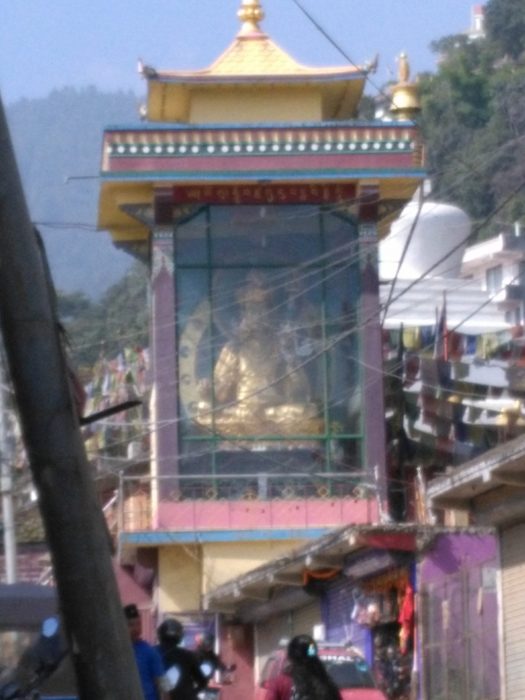
Fong doesn’t want to return to her career as a legal secretary, but is not financially ready to retire. She’s only 61. She plans to return to work soon and is exploring her options. For now, she is volunteering at her dharma center. She edits their newsletter and helps facilitate teachings. On the fourth of July she attended a Zoom teaching given by the Dalai Lama.
She is not worried about when or how she will return to Nepal. Her practice has taught her that things happen when they are meant to. “I will know when the time is right.”





